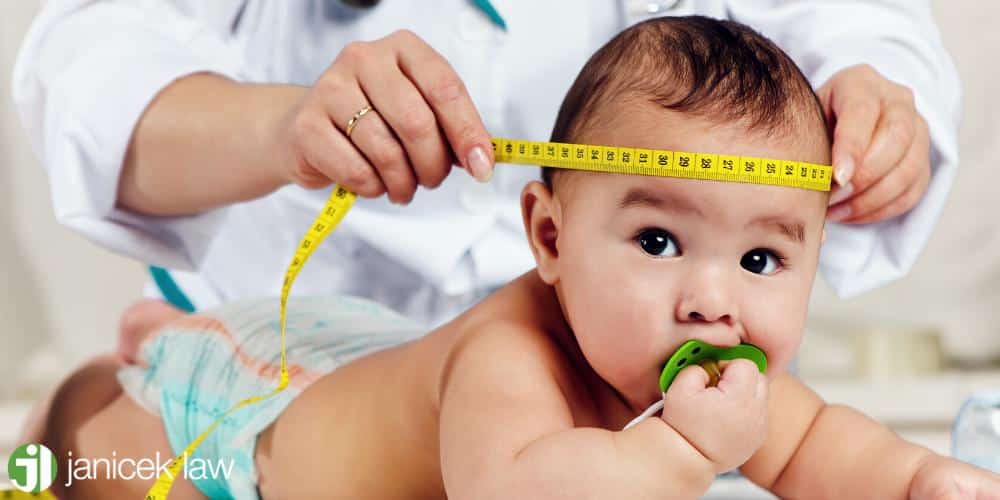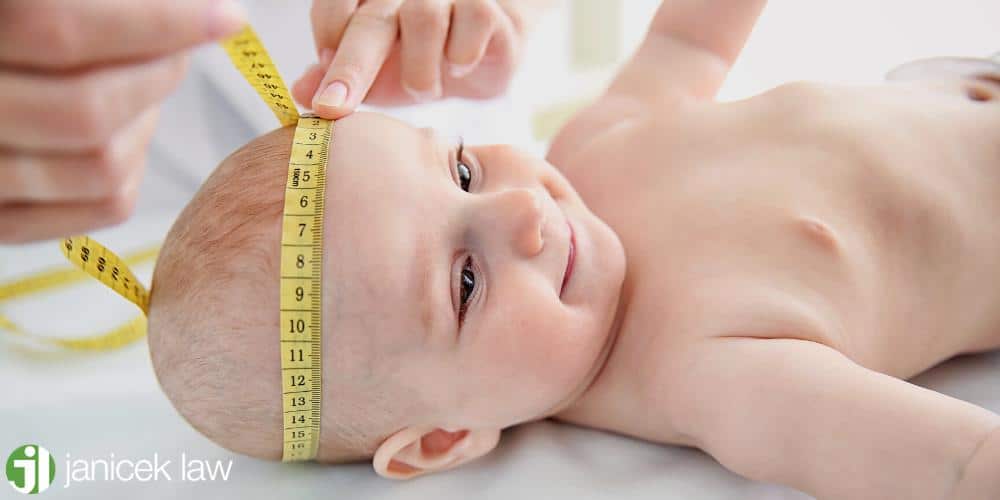San Antonio Caput Succedaneum Lawyer
San Antonio Birth Injury Attorney for Caput Succedaneum
Every day, thousands of babies suffer from birth injuries during the labor and delivery process. Some birth injuries are fairly minor, while some are catastrophic and can lead to lifelong disability. One of the most minor birth injuries out there is called caput succedaneum. This injury is basically swelling of the baby’s scalp due to prolonged pressure in the birth canal. Many times, there is nothing that doctors can do to prevent this injury. However, unnecessary use of forceps and/or vacuum extraction can cause the infant’s head to swell directly after birth. These unnecessary birthing techniques often fall under the legal umbrella of medical malpractice.
If you or your baby suffered a preventable birth injury due to medical negligence, you may have grounds to take legal action. San Antonio birth injury lawyers at Janicek Law have been helping parents obtain justice and financial compensation for their birth trauma for over 25 years. We can do the same for you. Call a San Antonio birth injury lawyer at 210-366-4949 to schedule a free consultation today.

What is Caput Succedaneum?
Caput succedaneum is a common type of birth injury characterized by edema (swelling) of the scalp shortly after birth. As a result, the baby’s head may look cone-shaped. Though swelling of the baby’s scalp may look alarming, it generally doesn’t indicate any major health issues, such as permanent brain damage or skull fractures.
Caput Succedaneum vs. Cephalohematoma
Caput succedaneum is very similar to another common type of birth injury called cephalohematoma. Both birth injuries involve slight damage to the baby’s head. Still, there are clear differences between caput succedaneum and cephalohematoma, which we’ll discuss below.
Firstly, cephalohematoma is a collection of blood under the infant’s scalp but on top of the skull. It basically looks like a large, lumpy bruise on the infant’s head. A cephalohematoma birth injury heals over the course of a few weeks to a few months. In severe cases, a cephalohematoma can be a sign of a skull fracture, but in most cases, it’s a pretty harmless birth injury. Lastly, a cephalohematoma doesn’t cross suture lines on the baby’s skull. Instead, the injury forms between the skull bone and the skull periosteum, which is the layer just below the skin.
Meanwhile, a caput succedaneum birth injury is merely just scalp swelling. It doesn’t look like a big bruise, like a cephalohematoma generally does. Instead, caput succedaneum will look like there’s clear or yellow fluids (serosanguinous fluids) under the scalp. This swelling will make many babies look like they have a “conehead.” Caput succedaneum very rarely indicates a skull fracture, and it generally resolves over the course of a few days to a week. Lastly, caput succedaneum crosses skull suture lines. More specifically, the injury crosses the midline of the occipital bone, which is the bone that’s toward the back of the skull.
How Common is Caput Succedaneum?
Caput succedaneum is a fairly common type of birth injury. In fact, the Cleveland Clinic claims that there’s a 2% to 33% chance of a newborn baby developing this type of birth injury.

Symptoms of Caput Succedaneum
The main symptom of caput succedaneum is puffiness and swelling on the newborn’s head. Scalp swelling typically occurs around the part of the head that exited the vaginal canal first. If you were to gently press your finger into the swollen area, your finger would likely leave a small indention on the newborn’s scalp.
The baby may also have some slight skin discoloration or bruising on their scalp, but it’s not near as noticeable as the bruising that accompanies cephalohematoma. Lastly, you may notice that your baby’s head is pointy and cone-shaped.
What Causes Caput Succedaneum?
Caput succedaneum occurs due to prolonged pressure on the infant’s head during a vaginal delivery. Significant pressure on the infant’s skull is generally created by the vaginal walls, the cervix, and/or the uterus.
Caput succedaneum can also occur before birth. For example, if the mother experiences a premature rupture of membranes (PROM), the baby could develop caput succedaneum. Babies develop and grow in an amniotic sac – which is sealed by membranes – for the entirety of a pregnancy. When these membranes rupture (AKA: the water breaks) and amniotic fluid is released before the expected due date, the infant’s head is no longer supported in the womb. The baby can suffer prolonged pressure from the mother’s pelvic bones, which can lead to caput succedaneum at birth.
Other possible risk factors for the development of caput succedaneum include:
- A long, difficult delivery
- Vacuum extraction or forceps use during labor and delivery
- Babies that have a higher birth weight (8lb, 13 oz and above)
- Not enough amniotic fluid in the womb
- Pregnancy that continues past the expected due date
- Braxton Hicks contractions (AKA false labor)
- C-sections
Potential Complications of Caput Succedaneum
There are a couple complications that could accompany a caput succedaneum birth injury, including:
- Jaundice: Swelling of the child’s head can lead to excess bilirubin in the bloodstream which can lead to jaundice. Babies with this condition can have a yellow-ish tint to their skin and eyes. Jaundice can be easily treated with light therapy. Untreated jaundice in babies can lead to a condition called kernicterus which is a type of brain damage due to excess bilirubin in the baby’s blood. Kernicterus can lead to athetoid cerebral palsy and potential hearing loss.
- Alopecia: Babies with caput succedaneum can also experience alopecia (AKA hair loss) in the swollen area. In most cases, alopecia is temporary and will resolve once the swelling goes down. More severe cases of caput succedaneum can lead to scarring on the baby’s head, which may lead to permanent hair loss.
Caput Succedaneum Treatment
The vast majority of babies with caput succedaneum need very little medical intervention in order to heal. There is no need to drain the fluid under the scalp, because that would just lead to a dangerous infection. The baby may need light therapy if they develop jaundice due to their scalp swelling. As previously stated, untreated jaundice can potentially lead to athetoid cerebral palsy without proper medical care. But the chances of this happening are very slim.
Can I Sue for Caput Succedaneum?
Most caput succedaneum cases are considered minor birth injuries that need very little medical intervention. Medical professionals can do everything right during the birthing process and a baby could still come out with scalp swelling.
However, if your baby’s case of caput succedaneum was caused by medical malpractice – such as unnecessarily using forceps or vacuum extraction – then you may have grounds to file a birth injury lawsuit. Or if your baby developed a severe case of jaundice caused by caput succedaneum and they didn’t receive proper medical treatment which led to other complications like athetoid cerebral palsy, you could sue for medical negligence as well.
San Antonio birth injury lawyers at Janicek Law can listen to your story, analyze the details of your case, and help you decide whether you have grounds to sue for medical malpractice.
Birth Injury Damages
A San Antonio birth injury lawyer at Janicek Law can help you recover financial compensation for the following types of damages:
- Past and future medical bills
- Past and future rehabilitative bills
- Lost wages (for the parents)
- Loss of earning capacity (for the child if they develop a severe disability such as cerebral palsy and cannot work in the future)
- Emotional distress
- Mental health counseling bills
- Expenses related to necessary medical equipment like wheelchairs and braces (again, if the child develops a severe disability)
- Funeral and burial expenses if the birth injury results in wrongful death

